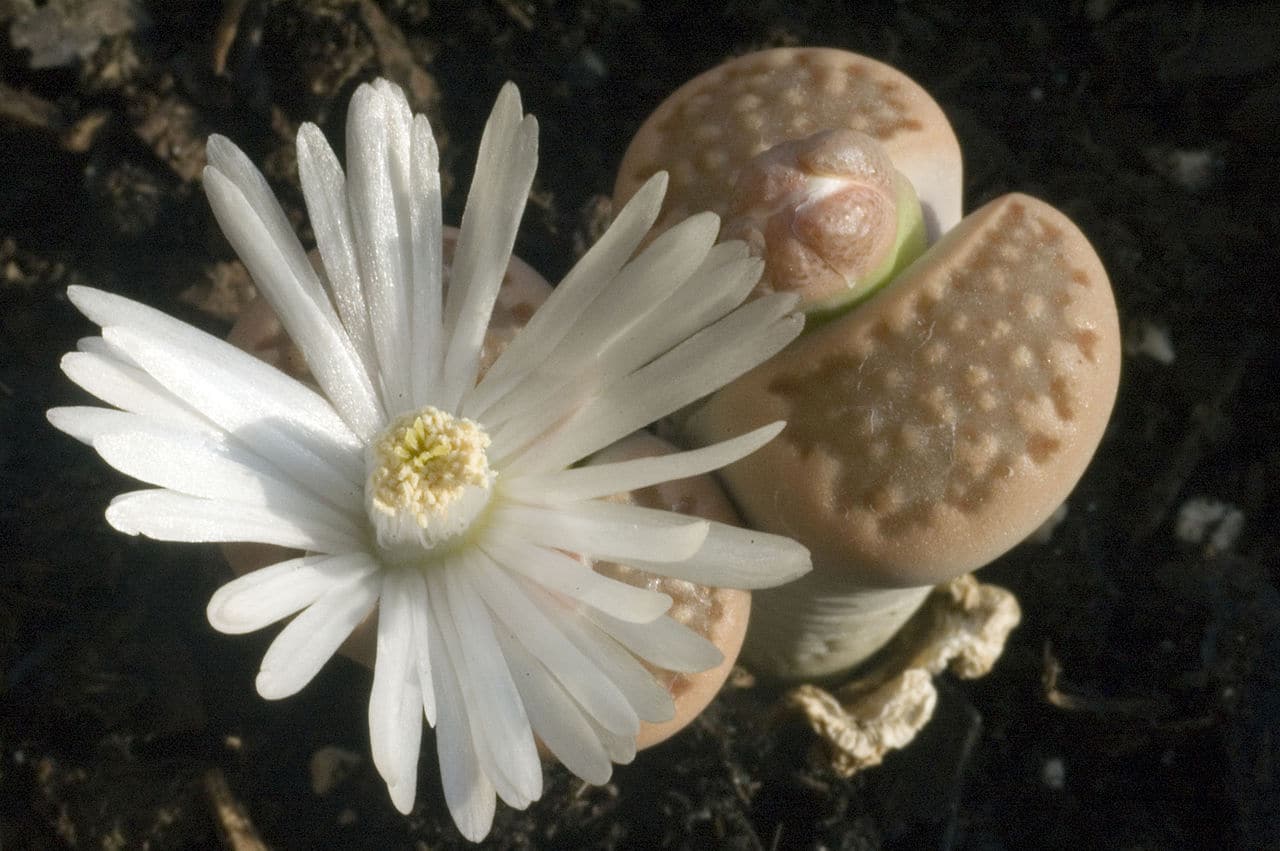
Image – Wikimedia/Anskrev
All succulent plants have flowers, since they all need to produce seeds. For this reason, what you will find here is a selection of those species that I consider to be the most beautiful and also easy to maintain.
So without further ado, take a look at the different flowering succulent plants that I recommend you include in your succulent collection. You may already know some of them, but surely there will be one that catches your attention.
Aloe variegata
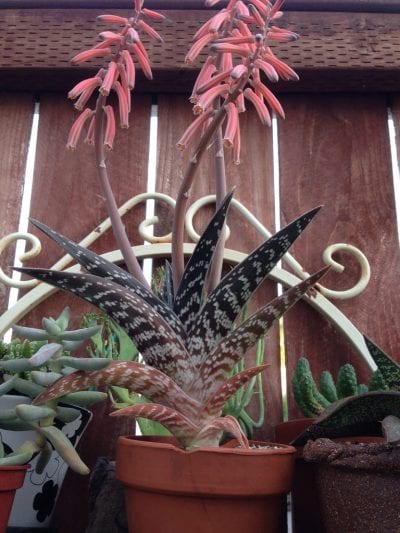
Image - Flickr / Reggie1
El Aloe variegata it is one of the smallest aloe species. It reaches 30 centimeters in height by about 10 centimeters in width, and has only about 18-20 dark green fleshy leaves with white spots. The flower is red, and it sprouts from a stem about 30 centimeters high.. It is a slow-growing plant that needs little watering, as well as protection against frost in case there are any.
Crassula ovata
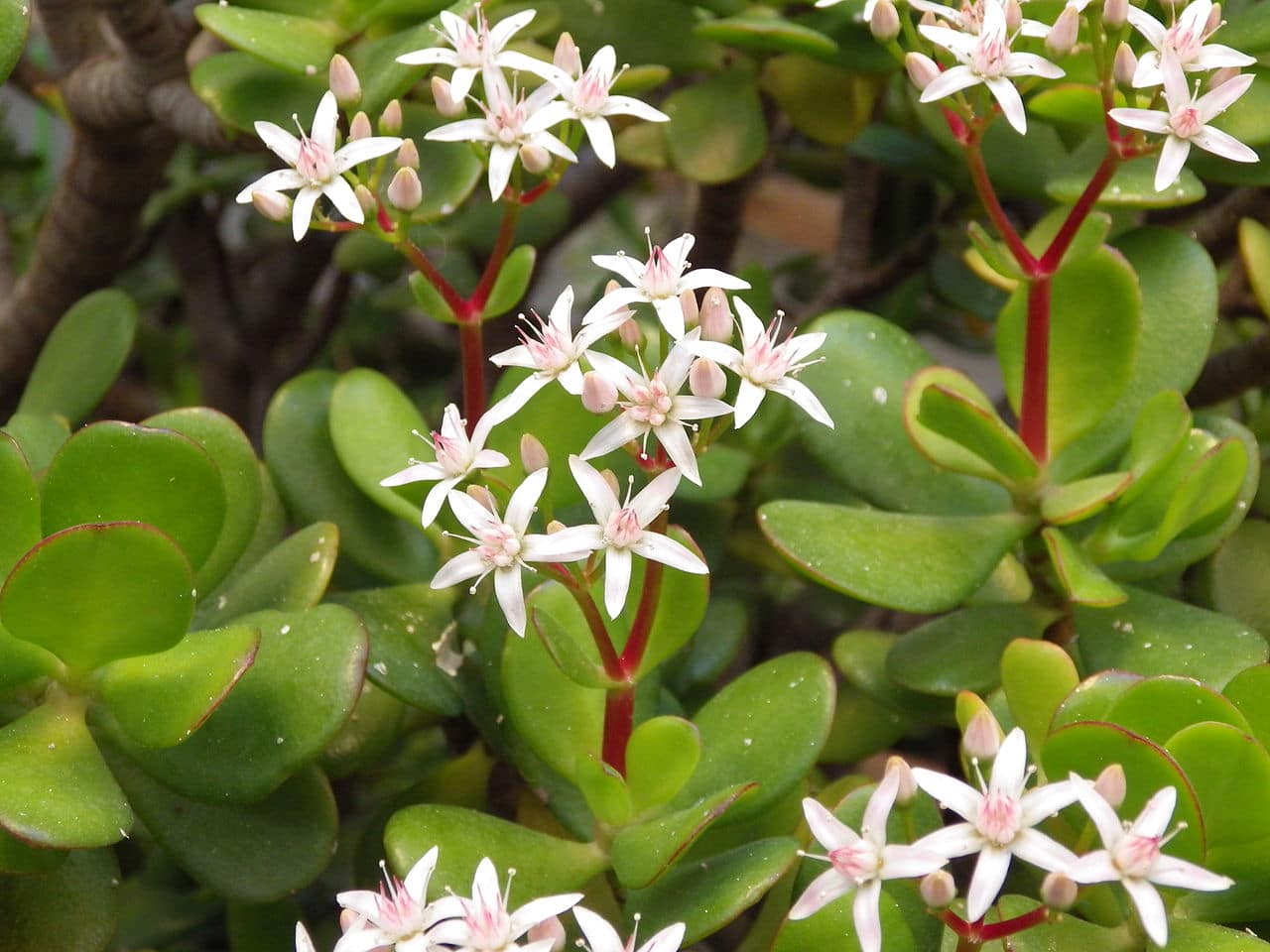
Image - Wikimedia / Aniol
La Crassula ovata It is an evergreen shrub that grows to about 1 meter in height. Its leaves are fleshy, rounded in shape, and generally dark green in color, but they can be green and yellow or green and reddish depending on the cultivar. Its flowers, which are white or pink, sprout in large numbers grouped in terminal inflorescences.Therefore, although they measure only 1 centimeter each, they are very showy.
Echeveria x imbricata
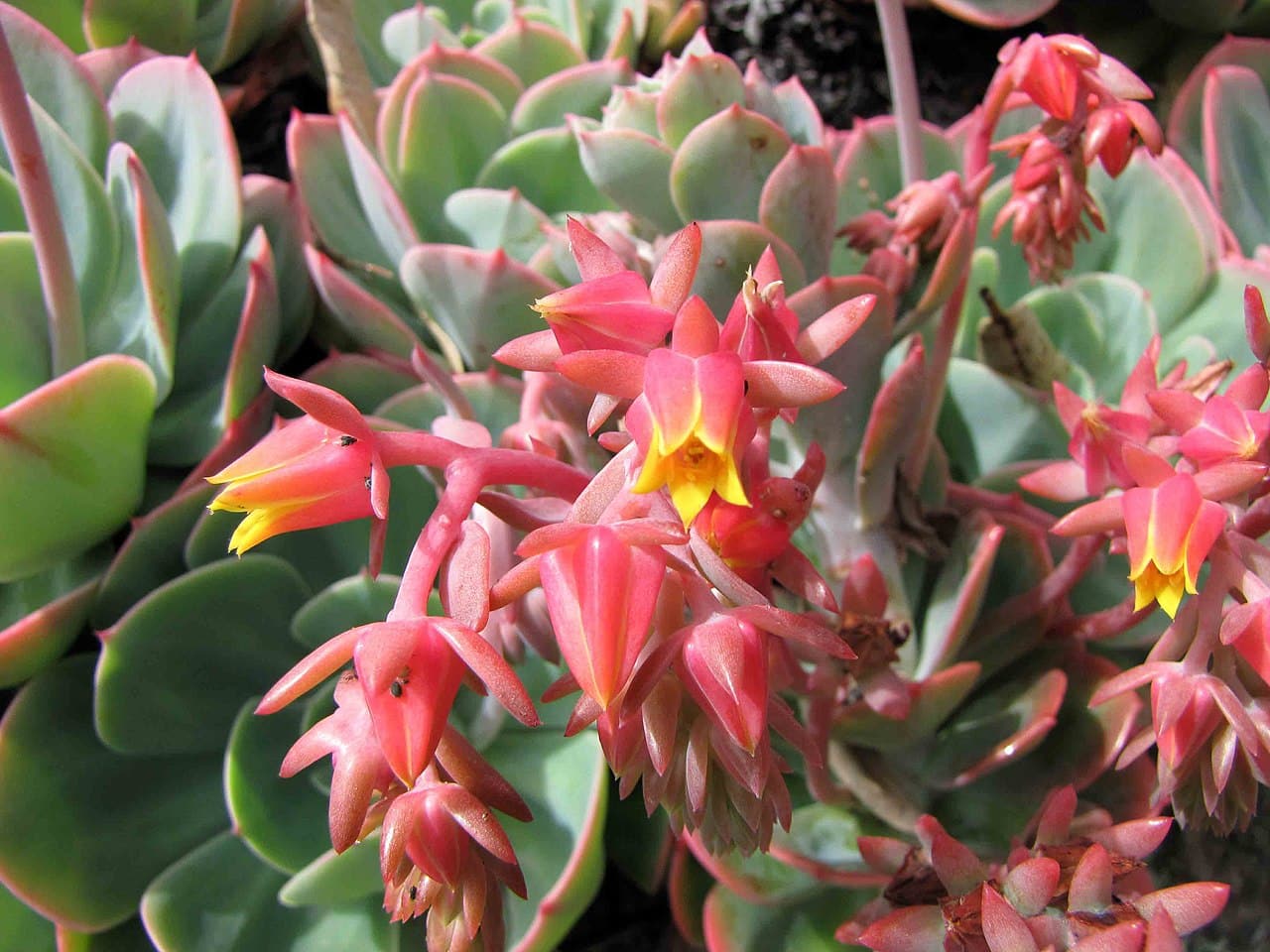
Image - Wikimedia / 阿 橋 HQ
I have a very serious problem with echeveriasbecause I like them all. And when I say all, I mean exactly that. It is very difficult for me to tell you which one is the most beautiful, because for me they all are. But hey, one of the easiest to get is this, the Echeveria x imbricata. It forms rosettes of fleshy, bluish-green leaves that are about 10 centimeters in diameter when mature. The flowers sprout from a fleshy, thin stem., and although they are small they are also very pretty. These measure one centimeter long by less than 1 centimeter wide, and are red and yellow in color. It resists temperatures down to -4ºC if they are occasional frosts.
gasteria carinata
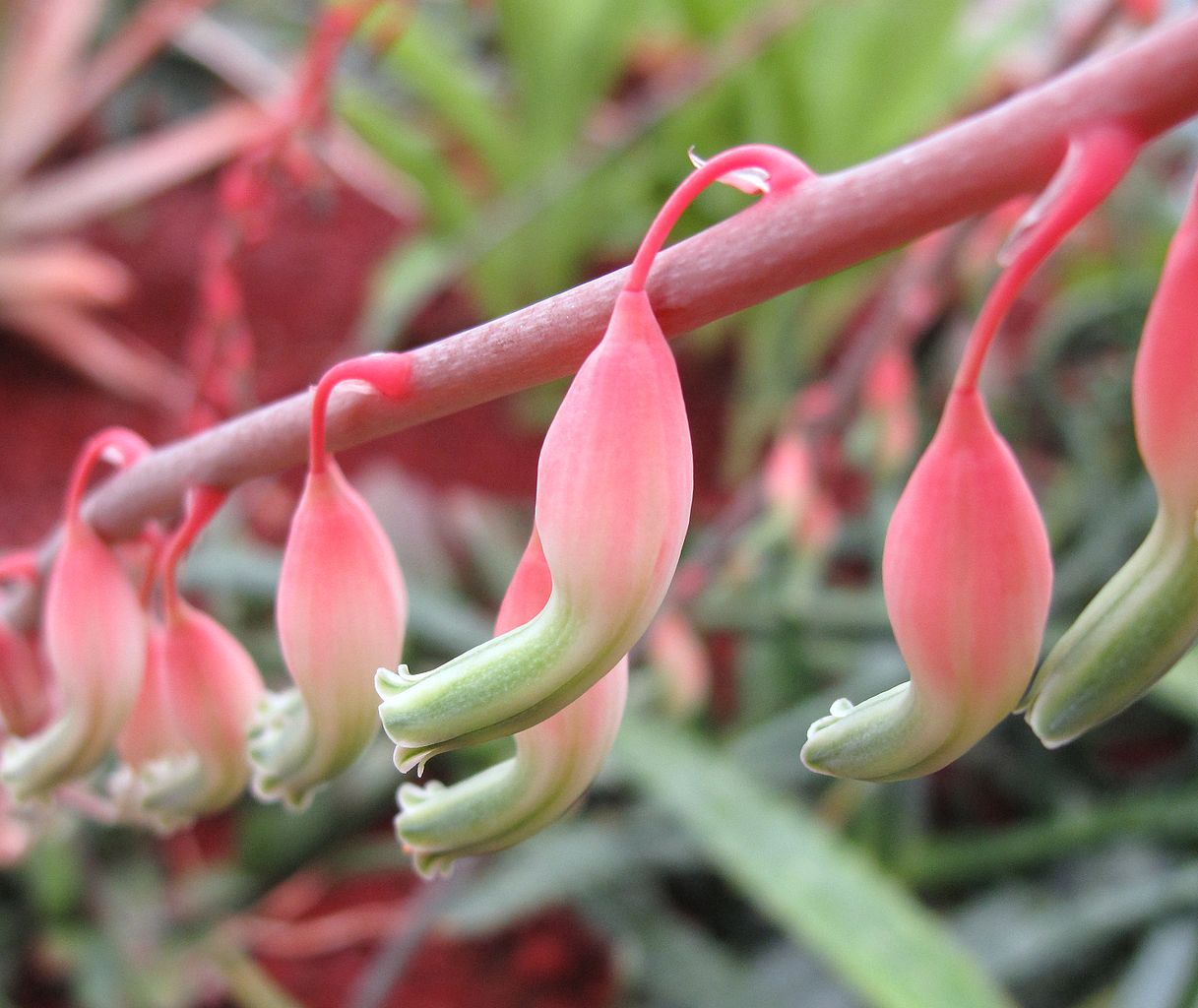
Image – Wikimedia/HelenaH
La gasteria carinata It is a plant that develops lanceolate, fleshy, dark green leaves with many white dots. It reaches a height of about 10 centimeters, and measures approximately the same width at first, but it must be taken into account that it produces many young throughout its entire life. For this reason, I recommend planting it in a pot that is wider than it is tall, or in the garden. Its flowers sprout from a fairly long stem, and are shaped like a small bell.. They are reddish-pink. Resistant up to -1ºC.
Kalanchoe blossfeldiana
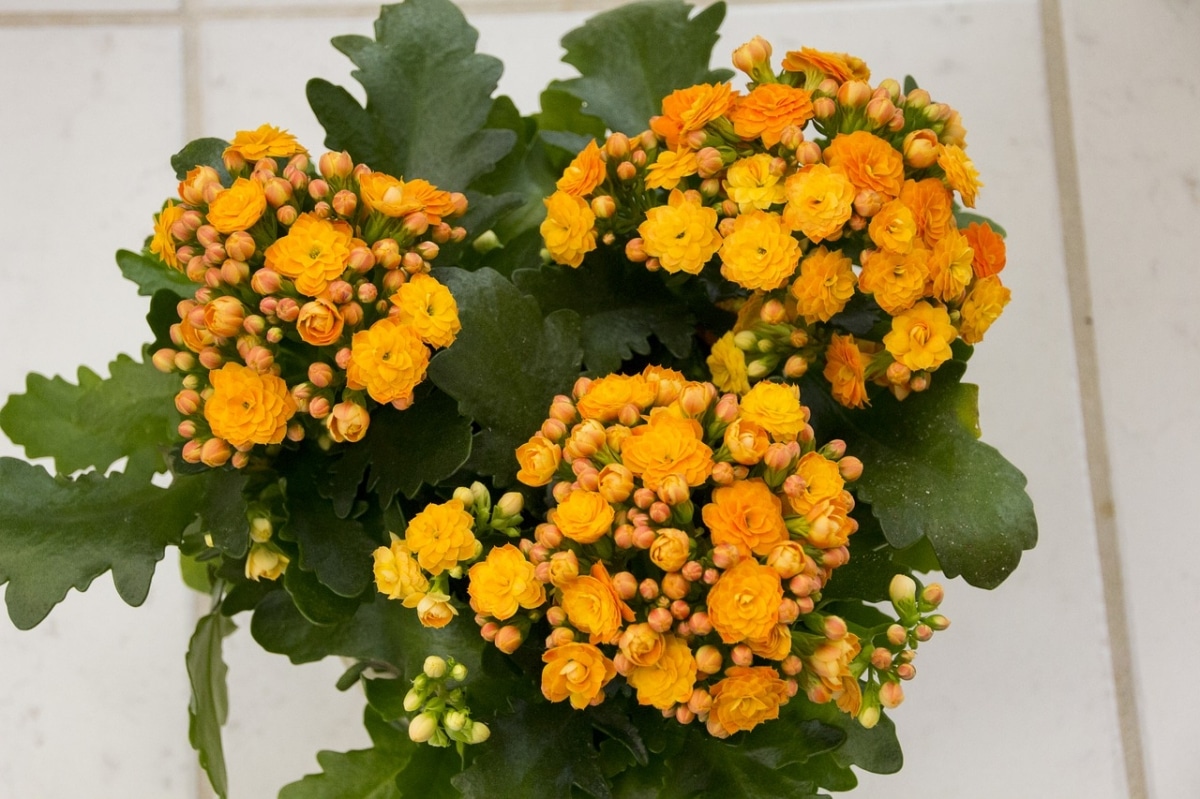
El Kalanchoe blossfeldiana It is a succulent plant with a flower that in Spain begins to be sold at the end of October and continues to be made until Christmas at least, since that is when it is flowering. It reaches 30 centimeters in height by 20 centimeters in width, and its flowers are small, white, red, pink, yellow or orange. It can't stand the cold, but that's not a problem because it lives well indoors with lots of light.
Lapidaria margaretae
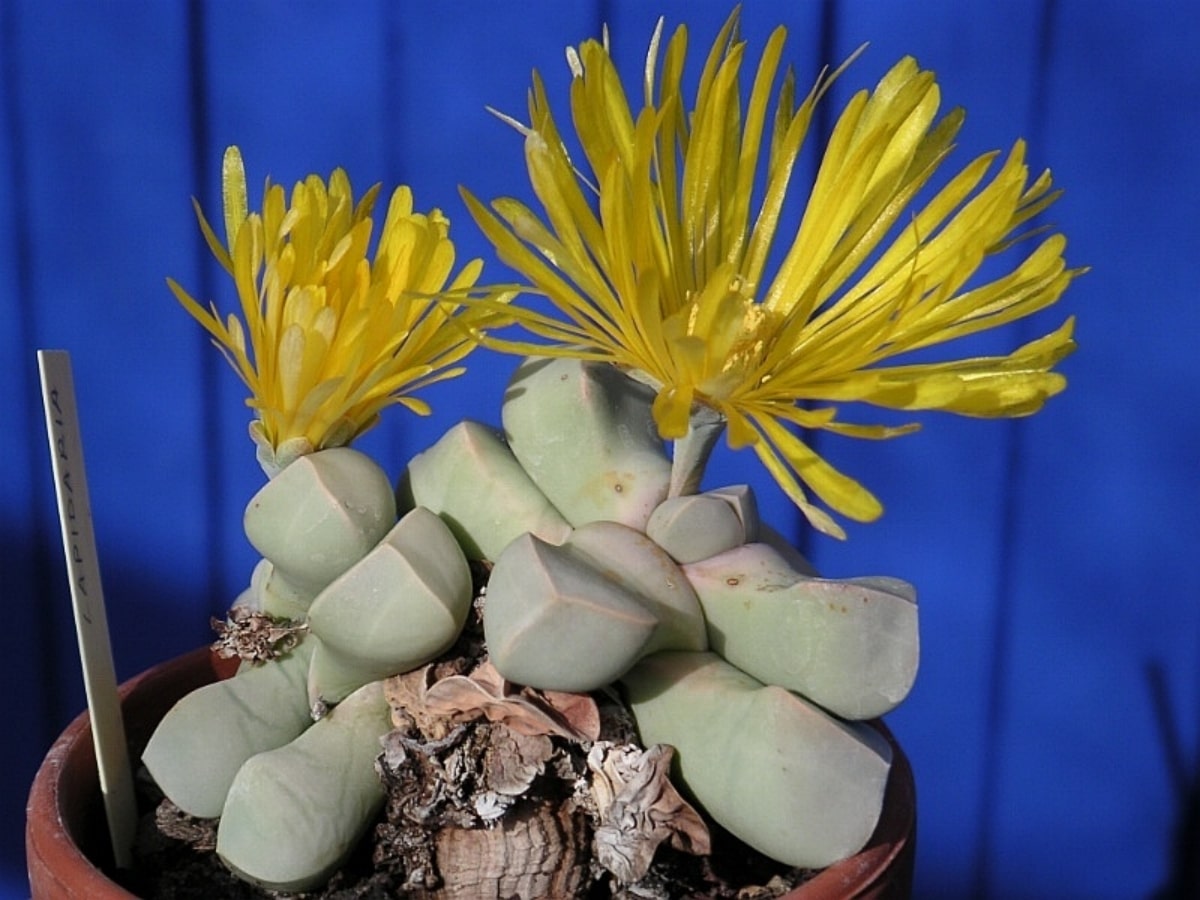
Image – Wikimedia/Jean-Jacques MILAN
La Lapidaria margareae It is one of the small succulents that you can have in pots. It reaches an approximate height of 5 centimeters, for more or less the same width. Its leaves are fleshy, very light green in color, and produces yellow flowers which sprout from a short stem. These are also small, since they measure a centimeter in diameter or so. It can withstand temperatures of up to -2 degrees Celsius without any problem, as long as it is punctual.
Lithops karasmontana
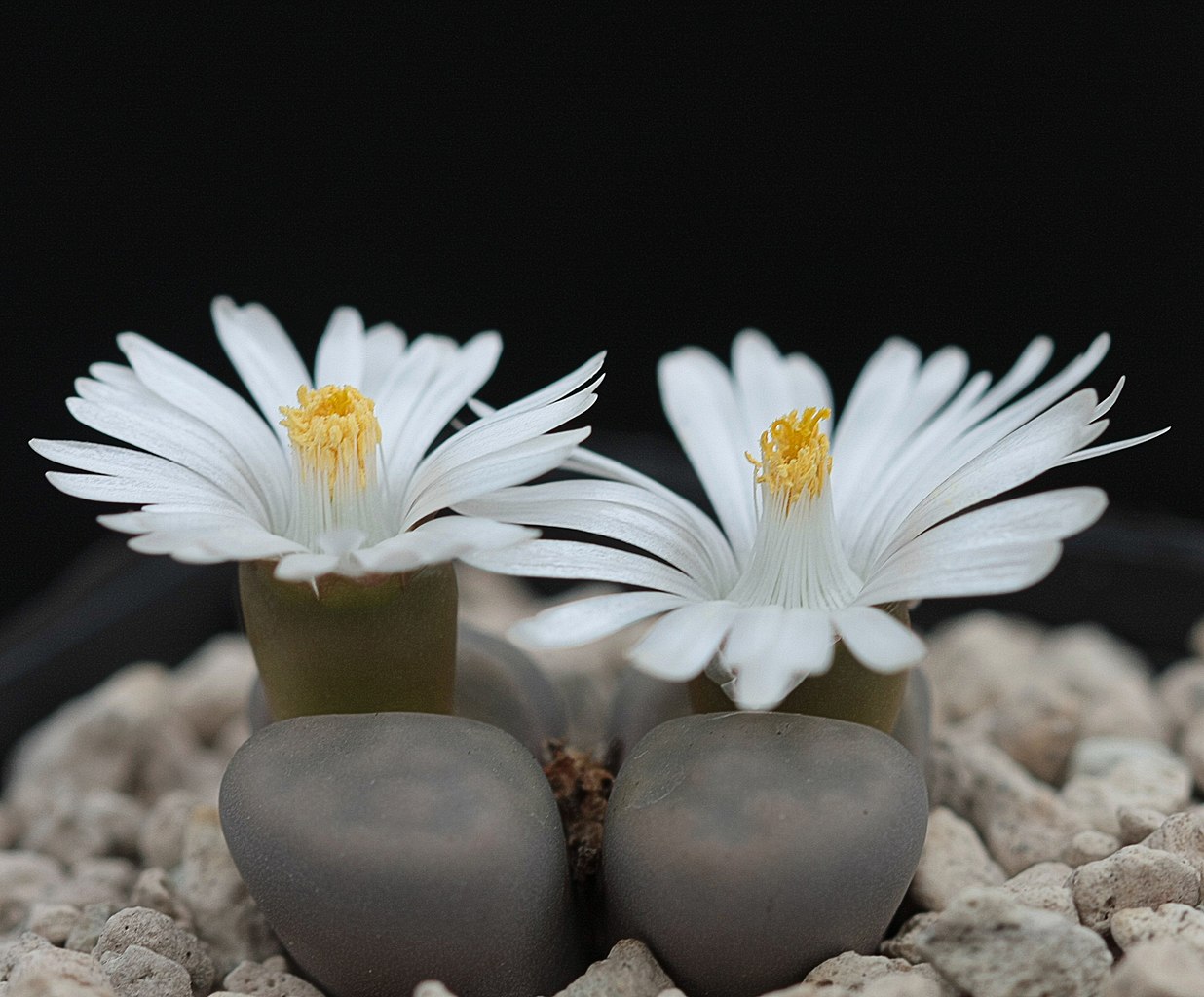
Image - Wikimedia / Dornenwolf
El Lithops karasmontana It is a crass plant that is so blended in with its environment that in popular language it is known by the name of living stone, since it grows between pebbles. It is very small, and a large part of its body is literally buried, covered by those little stones. It measures about 5 centimeters high at most, by 2 centimeters wide, and has only two sheets welded at the base. The flower is white, with thin and short petals, and has a diameter of 1,5 centimeters.. It is a succulent that supports the cold, but not the frost.
Pachyphytum oviferum
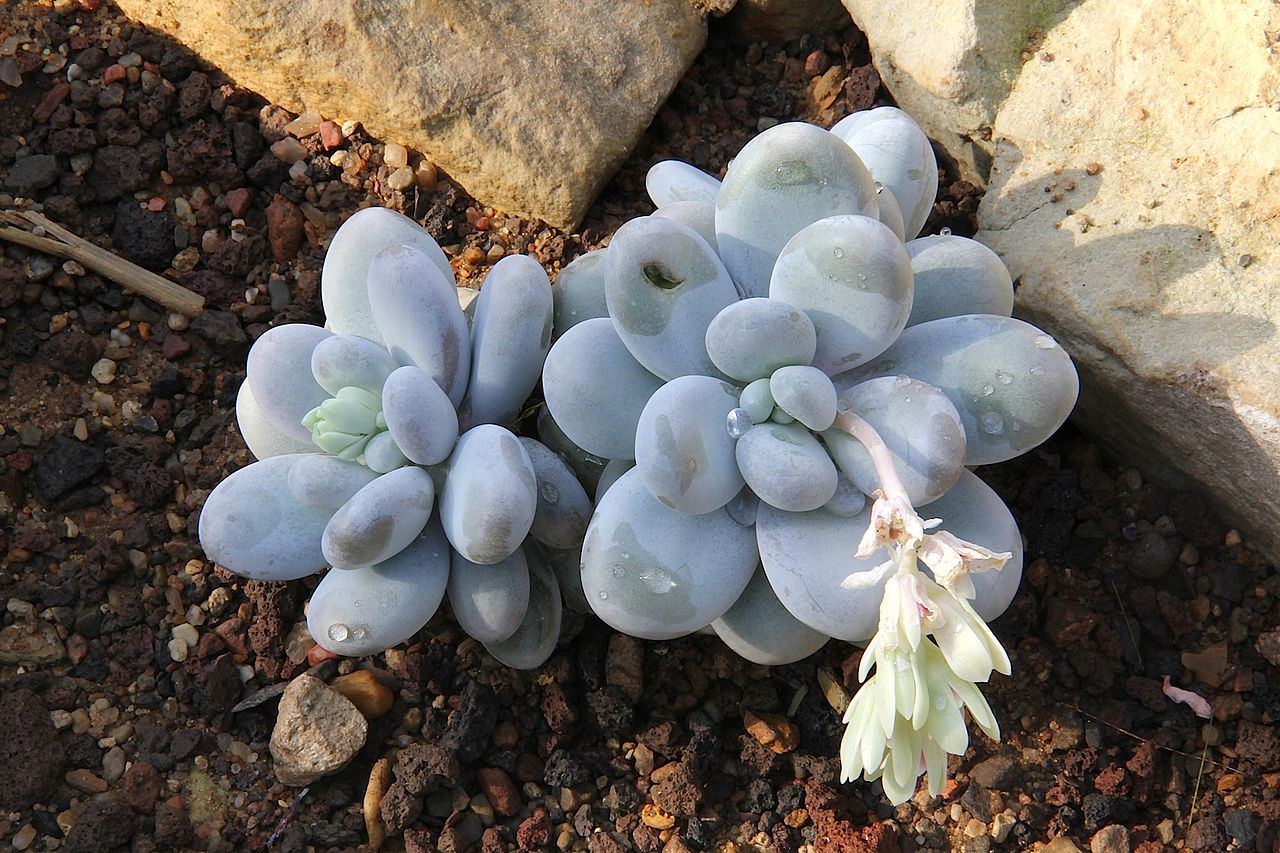
Image - Wikimedia / Peter A. Mansfeld
El Pachyphytum oviferum It is succulent with fleshy leaves, ovate in shape, glaucous green in color, and about 3 centimeters long. The flowers sprout from a thin stem, and are bell-shaped.. These are scarlet, so that contrast with the glaucous-green draws a lot of attention. Withstands temperatures down to -4ºC.
sedum spurium
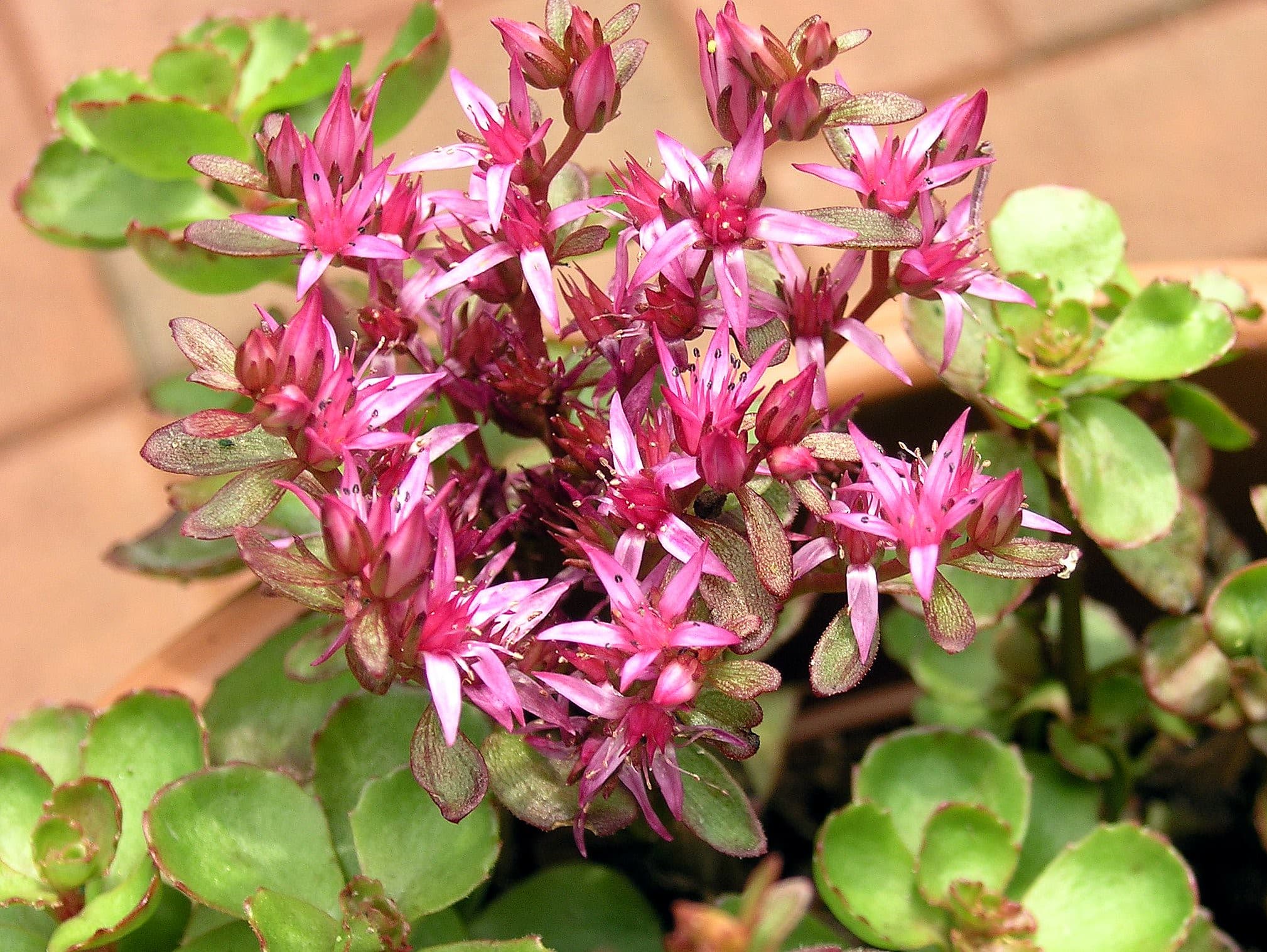
Image – Flickr/Gail Frederick
El sedum spurium It is a fleshy plant that reaches a height of about 50 centimeters, although this can attract attention since its stems usually grow horizontally and not vertically. Its flowers sprout in groups, and are usually pink., although they can be white; everything will depend on the variety or cultivar. It resists frost very well down to -10ºC.
Titanopsis calcarea
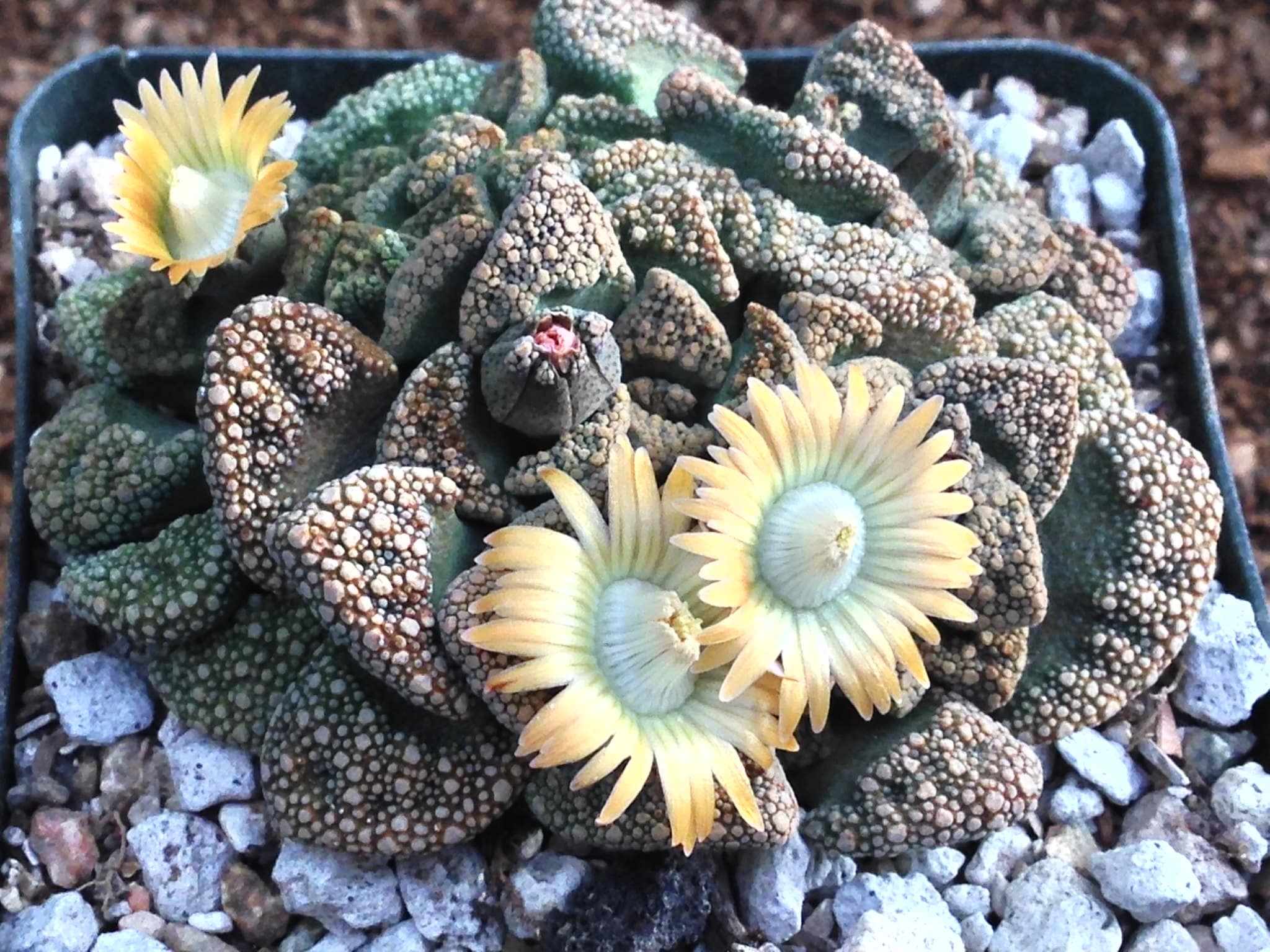
Image - Flickr / Reggie1
El Titanopsis calcarea It is a succulent plant with yellow flowers that reaches a height of about 3-4 centimeters and a width of 5-6 centimeters.. The leaves are greyish-green, and on the upper side, at the end, they have spots of a much lighter colour. It is a most curious species, which is especially beautiful in a pot with a mineral substrate (like the akadama for example). It is very interesting for beginners, since it does not have to be watered much and, in addition, it can withstand frosts down to -5ºC.
Which of these succulent flowering plants would you choose?